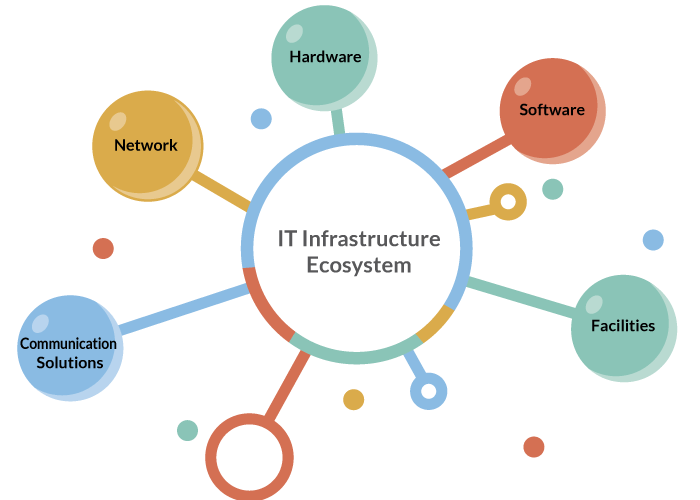Business information is no longer meant to be used only by the employees of the enterprise. The IT infrastructure should aim at providing information to all those who are associated with the enterprise in achievement of its goals.
Stakeholders in Business Environment
- Shareholders and investors, customers, vendors, statutory bodies, industry promotion bodies, employees unions, etc.
- They are entities that have stake in the success of the enterprise and require timely information.
Importance of IT Infrastructure for Owners and Investors
- Companies are competing for selling their investment opportunities.
- ‘Investor friendly’ companies provide timely information to shareholders and lenders.
- More transparency leads to better investor relationships and lower cost of funds.
Importance of IT Infrastructure for Customers
- Customers prefer to acquire information regarding product options.
- IT infrastructure may aim at providing information regarding the product line and product options available to customers with the impact of each option on pricing of the product ordered.
Importance of IT Infrastructure for Suppliers and Employees’ Unions
- Management techniques like ‘Just in time’ inventory management, are possible only with efficient systems of information exchange with the suppliers.
- Suitable IT infrastructure can help to improve communication with suppliers and employees unions.
Importance of Communication Systems for External Users
- External users require better communication systems for accessing information resources of the enterprise.
- The advancement in communication technology and its convergence with information technology have started incorporating the needs of these users in their plans for IT infrastructure.
Conclusion
IT infrastructure is crucial for catering to the information needs of stakeholders in the business environment. Timely and transparent information can help in maintaining better investor relationships, improving customer communication, and establishing a global presence. Efficient systems of information exchange with suppliers and employees’ unions can lead to improved management techniques. With the advancement in communication technology, new business information systems are incorporating the needs of external users in their plans for IT infrastructure.

